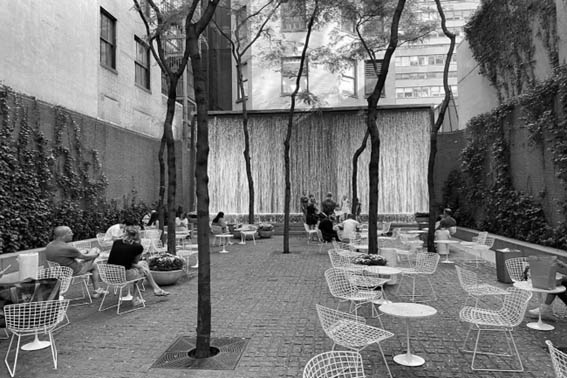Urban Planning Criteria for Defining Privately Owned Public Spaces (POPS)
DOI:
https://doi.org/10.31522/p.31.1(65).10Keywords:
land ownership, public-private negotiations, public space, urban design, urban planningAbstract
This research is based on the systematic literature review related to the definition of Privately Owned Public Spaces (POPS). POPS arise as a bonus of the urban planning concession resulting from negotiations between private investors and city administration. The question arises whether, during their formation, the urbanistic criteria that ensure public space quality are sufficiently represented, or the superior private interest results in critical urban quality aspects. By comparatively analyzing the definitions’ key features, nine specific POPS aspects have been identified and classified into two categories according to basic criteria: impact on investors and on broader urban contexts. The results show that a group of spatial criteria (usage impact, user’s perception, connectivity, urbanity and socialization) have been neglected or ignored in defining POPS. Current definitions do not consider the importance of POPS influence in a wider urban context and POPS is not, in any way, controlled or connected to the comprehensive process of urban planning, which can lead to a neglect of the fundamental roles and quality of public space. Further studies should focus on analyzing the impact of POPS in a broader urban context as well as defining mandatory urban planning criteria for insuring the quality of public space.
References
Advocates of Privately Owned Public Spaces (APOPS) and The Municipal Art Society of New York (MASNYC). https://apops.mas.org/find-apops/ [Accessed: 15 November 2022]
Arvidson, A.R. (2013) Hybrid spaces and their hazards. Landscape Architecture Magazine, 103 (5), p. 28.
Bates, L.J. and Santerre, R.E. (2001) The public demand for open space: the case of Connecticut communities. Journal of Urban Economics, 50 (1), pp. 97-111. https://doi.org/10.1006/juec.2000.2212
Cariello, A.; Ferorelli, R. and Rotondo, F. (2021) Tactical urbanism in Italy: From grassroots to institutional tool - assessing value of public space experiments. Sustainability, 13(20), 11482. https://doi.org/10.3390/su132011482
Carmona, M. (2010) Contemporary public space, part two: Classification. Journal of urban design, 15(2), pp. 157-173. https://doi.org/10.1080/13574801003638111
Carmona, M. (2015) Re-theorising contemporary public space: a new narrative and a new normative. Journal of Urbanism: International Research on Placemaking and Urban Sustainability, 8(4), pp. 373-405. https://doi.org/10.1080/17549175.2014.909518
Carmona, M. (2017) The ‘public-isation’ of private space. https://matthewcarmona.com/2017/08/08/57-the-publicisation-of-privatespace/ [Accessed: 21 November 2022]
Carmona, M. (2018) Principles for public space design, planning to do better. Urban Design International, 24(1), pp. 47-59. https://doi.org/10.1057/s41289-018-0070-3
Carmona, M.; De Magalhaes, C. and Hammond, L. (2008) Public Space: The Management Dimension, Routledge: London. https://doi.org/10.4324/9780203927229
Castillo, C.; Viu-Roig, M. and Alvarez-Palau, E.J. (2022) COVID-19 lockdown as an opportunity to rethink urban freight distribution: Lessons from the Barcelona metropolitan area. Transportation Research Interdisciplinary Perspectives, 14, 100605. https://doi.org/10.1016/j.trip.2022.100605
De Magalhaes C. (2010) Public space and the contracting-out of publicness: A framework for analysis. Journal of Urban Design, 15, pp. 559-574. https://doi.org/10.1080/13574809.2010.5
Department of City Planning - New York, 2022. https://www1.nyc.gov/site/planning/plans/pops/pops.page [Accessed: 21 November 2022]
Department of City Planning - New York 2023: DCP Compliance Protocol (Archived: DCP Compliance Protocols for POPS and WPAA). https://www.nyc.gov/site/planning/about/dcp-compliance-protocol.page [Accessed 1 March 2023]
Development Bureau, Hong Kong (2008) Report on Consultancy Study on Public Open Space in Private Developments (POSPD).
Dimmer, C. (2012) Re-imagining public space: The vicissitudes of Japan’s privately owned public spaces. In: Urban Spaces in Japan: Cultural and Social Perspectives, Taylor and Francis, pp. 74-105. https://doi.org/10.4324/9780203120071
Dimmer, C. (2013) Privately owned public space: the international perspective. Sustainable Urban Regeneration, 25, pp. 2-80, Center for Sustainable Urban Regeneration, The University of Tokyo.
Elmlund, P.; Haas, T. and Mehaffy, M.W. (2018) Public Space in the New Urban Agenda. The Challenge of Implementation. The Journal of Public Space, 3(1), pp. 165-170. https://doi.org/10.5204/jps.v3i1.324
Fainstein S. (2000) New directions in planning theory. Urban Affairs Review, 35, pp. 451-478.
Greenspace Information for Greater London CIC (GiGL). https://doi.org/10.1177/107808740003500401
Grobelšek, L.J. (2012) Private space open to the public as an addition to the urban public space network. Urbani izziv, 23(1), pp. 101-111. https://doi.org/10.5379/urbani-izziv-en-2012-23-01-003
Grobelšek, L.J. (2015) Public Spaces and Private Spaces Open to the Public: Spatial Planning and Development Using Urban Design Guidelines. Open Urban Stud. Demogr. J., 1(1). https://doi.org/10.2174/2352631901401010023
Haas, T. and Olsson, K. (2014) Transmutation and reinvention of public spaces through ideals of urban planning and design. Space and Culture, 17(1), pp. 59-68.
Haas, T. and Mehaffy, M.W. (2019) Introduction: the future of public space. Urban Des Int, 24, pp. 1-3. https://doi.org/10.1057/s41289-018-0062-3
Herman, K. and Drozda, Ł. (2021) Green infrastructure in the time of social distancing: Urban policy and the tactical pandemic urbanism. Sustainability, 13(4), 1632. https://doi.org/10.3390/su13041632
Hong Kong Buildings Department: https://www.bd.gov.hk/en/resources/codes-and-references/public-open-space/index.html
Hong Kong Development Bureau (2014) Provision of public open space in private developments [Accessed: 20 November 2023]
Huang, T.S. (2014) Is the public invited? Design, management and use of privately owned public spaces in New York City. New Jersey Institute of Technology.
Huang, T.S. and Franck, K.A. (2022) A history of New York City’s bonus incentive program and the changing role of the planning department from 1961 to 2019. Journal of Urban Design, pp.1-17. https://doi.org/10.1080/13574809.2022.2039061
Irwin, E.G. (2002) The effects of open space on residential property values. Land economics, 78(4), pp. 465-480. https://doi.org/10.2307/3146847
Jian, I.Y.; Yung, E.H.; Luo, M.J.; Chan, E.H. and Chen, W.Z. (2020) Department of Building and Real Estate, and Research Institute for Sustainable Urban Development, The Hong Kong Polytechnic University et al. “A typological study of public open space in private developments in Hong Kong”, presented at the Post-Oil City Planning for Urban Green Deals Virtual Congress. https://doi.org/10.47472/EBOV7340
Kärrholm, M. (2019) Scale alignment: on the role of material culture for urban design. Urban Des Int, 24, pp. 7-15. https://doi.org/10.1057/s41289-018-0071-2
Katayoun Karampour (2021) Implications of density bonus tool for urban planning: relaxing floor area ratio (FAR) regulations in Tehran. International Planning Studies, 26(3), pp. 219-235. https://doi.org/10.1080/13563475.2020.1802235
Kayden, J.S. (2000) Privately Owned Public Space: The New York City Experience. John Wiley & Sons: New York.
Leclercq, E. and Pojani, D. (2020) Private, hybrid, and public spaces: Urban design assessment, comparisons, and recommendations. In: Companion to Public Space, pp. 249-266, Routledge. https://doi.org/10.4324/9781351002189-20
Lee, D. (2020) Whose space is privately owned public space? Exclusion, underuse and the lack of knowledge and awareness. Urban Research & Practice, pp. 1-15. https://doi.org/10.1080/17535069.2020.1815828
Lee, D. (2022) Public Space in Transition: Coproduction and Co-management of Privately Owned Public Space in Seoul and Berlin. https://doi.org/10.1080/17535069.2020.1815828
Lichtenbaum, S.L. and Rosen, G. (2018) Municipal management of residential collectively owned open space: Exploring the case of Israel. Land Use Policy, 76, pp. 762-771. https://doi.org/10.1016/j.landusepol.2018.03.004
Lin, H.Ch. and Chao, T.Y. (2015) The relationship between POPS and public open space system based on spatial point pattern analysis in Taipei City, Taiwan. In: 2015 AESOP Annual Congress.
Luk, W.L. (2009) Privately owned public space in Hong Kong and New York: The urban and spatial influence of the policy. In: The 4th International Conference of the International Forum on Urbanism (IFoU), pp. 697-706.
Madanipour, A. (2003) Public and private spaces of the city. Routledge. https://doi.org/10.4324/9780203402856
Madanipour, A. (2005) Why are the design and development of public spaces significant for cities? Environ. Plan. B Plan. Des. 1999, 26, pp. 879-891.
Miao, P. (2011) Brave new city: Three problems in Chinese urban public space since the 1980s. Journal of Urban Design, 16(2), pp. 179-207. https://doi.org/10.1080/13574809.2011.548980
Nasution, A.D. and Zahrah, W. (2015) The Space is not ours, the life of public open space in gated community in Medan, Indonesia. Procedia-Social and Behavioral Sciences, 202, pp. 144-151. https://doi.org/10.1016/j.sbspro.2015.08.217
Németh, J. (2009) Defining a Public: The Management of Privately Owned Public Space. Urban Stud., 46(11), pp. 2463-2490. https://doi.org/10.1177/0042098009342903
Németh, J. and Schmidt, S. (2011) The privatization of public space: modeling and measuring publicness. Environment and Planning B: Planning and Design, 38(1), pp. 5-23. https://doi.org/10.1068/b36057
Nissen, S. (2008) Urban transformation from public and private space to spaces of hybrid character. Czech Sociological Review, 44(6), pp.1129-1149. https://doi.org/10.13060/00380288.2008.44.6.04
Oliveira, L. and Pisani, M.A.J. (2017) Privately owned public spaces: POPS in New York City, (39), pp. 113-132. https://doi.org/10.11606/issn.2359-5361.v0i39p113-132
Pratt, A. (2017) The rise of the quasi-public-space and its consequences for cities and culture. Palgrave Communications, 3(1), pp. 1-4. https://doi.org/10.1057/s41599-017-0048-6
Rahi, G.; Martynkiw, A. and Hein, E. (2012) Accessing Vancouver’s Privately Owned Public Spaces. Trail Six: An Undergraduate Journal of Geography, 6, pp. 24-38.
Rivera, C.; Ståhle, A.; Spacescape, C.; Kamiya, M.; Aguinaga, G. and Siegel, Y. (2018) Developing Public Space and Land Values in Cities and Neighbourhoods: UN Habitat.
Schindler, S. (2017) The ‘Publicization’ of Private Space. Iowa Law Rev. 103(3), pp. 1093-1153.
Schmidt S. and Nemeth J. (2010) Space, place and the city: Emerging research on public space design and planning. Journal of Urban Design, 15, pp. 453-457. https://doi.org/10.1080/13574809.2010.502331
Schmidt, S.; Németh, J. and Botsford, E. (2011) The evolution of privately owned public spaces in New York City. Urban Design International, 16(4), pp. 270-284. https://doi.org/10.1057/udi.2011.12
Schwartzmann, S. (2022) Public space and new urban compromises. Comparative perspectives from the Mediterranean. Méditerranée. Revue géographique des pays méditerranéens /Journal of Mediterranean geography, 134. https://doi.org/10.4000/mediterranee.12980
Seattle Government - Department of Construction & Inspections (SDCI). https://www.seattle.gov/sdci/resources/privately-owned-publicspaces [Accessed: 20 December 2022]
Smithsimon, G. (2008) Dispersing the crowd: bonus plazas and the creation of public space. Urban affairs review, 43(3), pp. 325-351. https://doi.org/10.1177/1078087407306325
The City of Waterloo (2019) Guidelines or Privately Owned Publicly Accessible Spaces (POPS). https://www.waterloo.ca/en/government/privately-owned-publicly-accessiblespaces.aspx [Accessed: 13 December 2022]
Tokyo POPS map. Interactive map of Privately Owned Public Space in Tokyo area. Concept: Dr. Christian Dimmer - University of Tokyo. http://janlindenberg.net/tokyo-pops-map/ [Accessed: 2 December 2022]
Wbur (2017) “Privatization in America. How Privatization Impacts Public Spaces and Infrastructure”. Interview Highlights: Jerold Kayden. https://www.wbur.org/hereandnow/2017/05/11/privately-owned-public-space. [Accessed: 31 July 2022]
Webster, C. (2007) Property Rights, Public Space and Urban Design, Urban Planning. Town Plan. Rev., 78, pp. 81-101. https://doi.org/10.3828/tpr.78.1.6
Xing, N. (2013) Design for the public: public design in outdoor privately owned public space (POPS) in Hong Kong shopping centers. Pao Yue-Kong Library, The Hong Kong Polytechnic University, Hung Hom, Kowloon
Yang, Y. (2013) Urban Regime and POSPD Development in Hong Kong. Doctoral dissertation, University of Illinois at Chicago.
Yoon, H. and Srinivasan, S. (2015) Are they well situated? Spatial analysis of privately owned public space, Manhattan, New York City. Urban Affairs Review, 51(3), pp. 358-380. https://doi.org/10.1177/1078087414552457
Yu, Y. (2018) The changing urban political order and politics of space: A study of Hong Kong’s POSPD policy. Urban Affairs Review, 54(4), pp. 732-760. https://doi.org/10.1177/1078087417

Downloads
Published
How to Cite
Issue
Section
License
Copyright (c) 2023 Zejnulla Rexhepi, Sanja Gašparović, Tihomir Jukić

This work is licensed under a Creative Commons Attribution 4.0 International License.
Copyright (c) 2021 authors and journal.
This work is licensed under a Creative Commons Attribution 4.0 International License.
Authors who publish with this journal agree to the following terms:
In agreeing this form, you certify that:
- You read the ethical codex of the PROSTOR available at journal web.
- You submitted work is your original work, and has not previously been published and does not include any form of plagiarism.
- You own copyright in the submitted work, and are therefore permitted to assign the licence to publish to PROSTOR.
- Your submitted work contains no violation of any existing copyright or other third party right or any material of an obscene, libellous or otherwise unlawful nature.
- You have obtained permission for and acknowledged the source of any illustrations, diagrams or other material included in the work of which you are not the copyright owner.
- You have taken due care to ensure the accuracy of the work, and that, to the best of your knowledge, there are no false statements made within it.
- All co-authors of this submitted work are aware of, and in agreement with, the terms of this licence and that the submitted manuscript has been approved by these authors.






